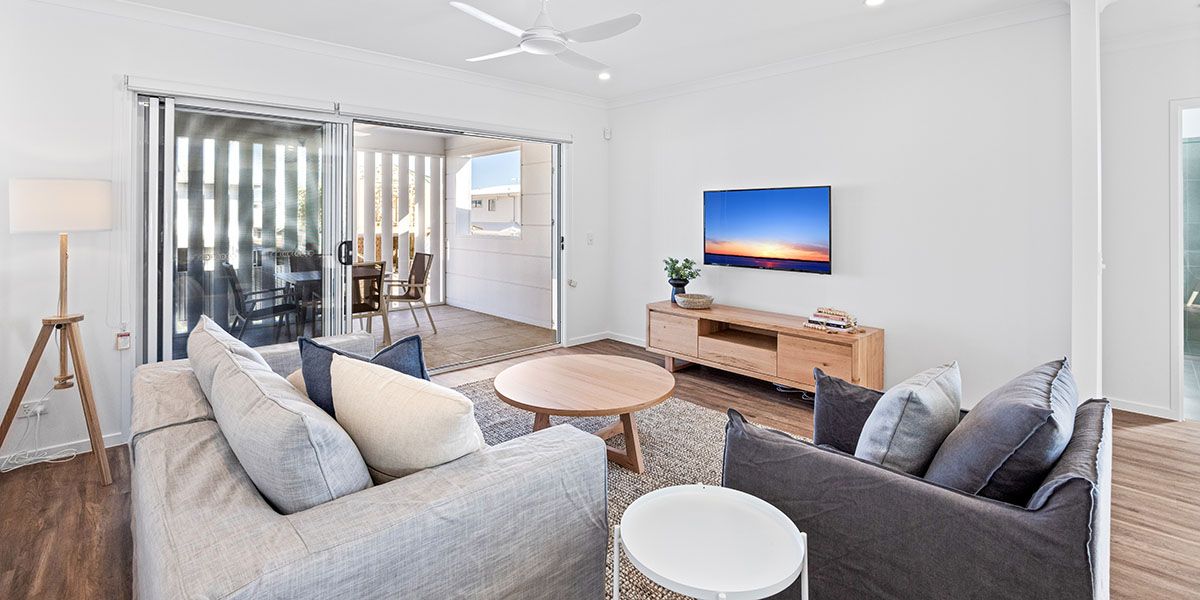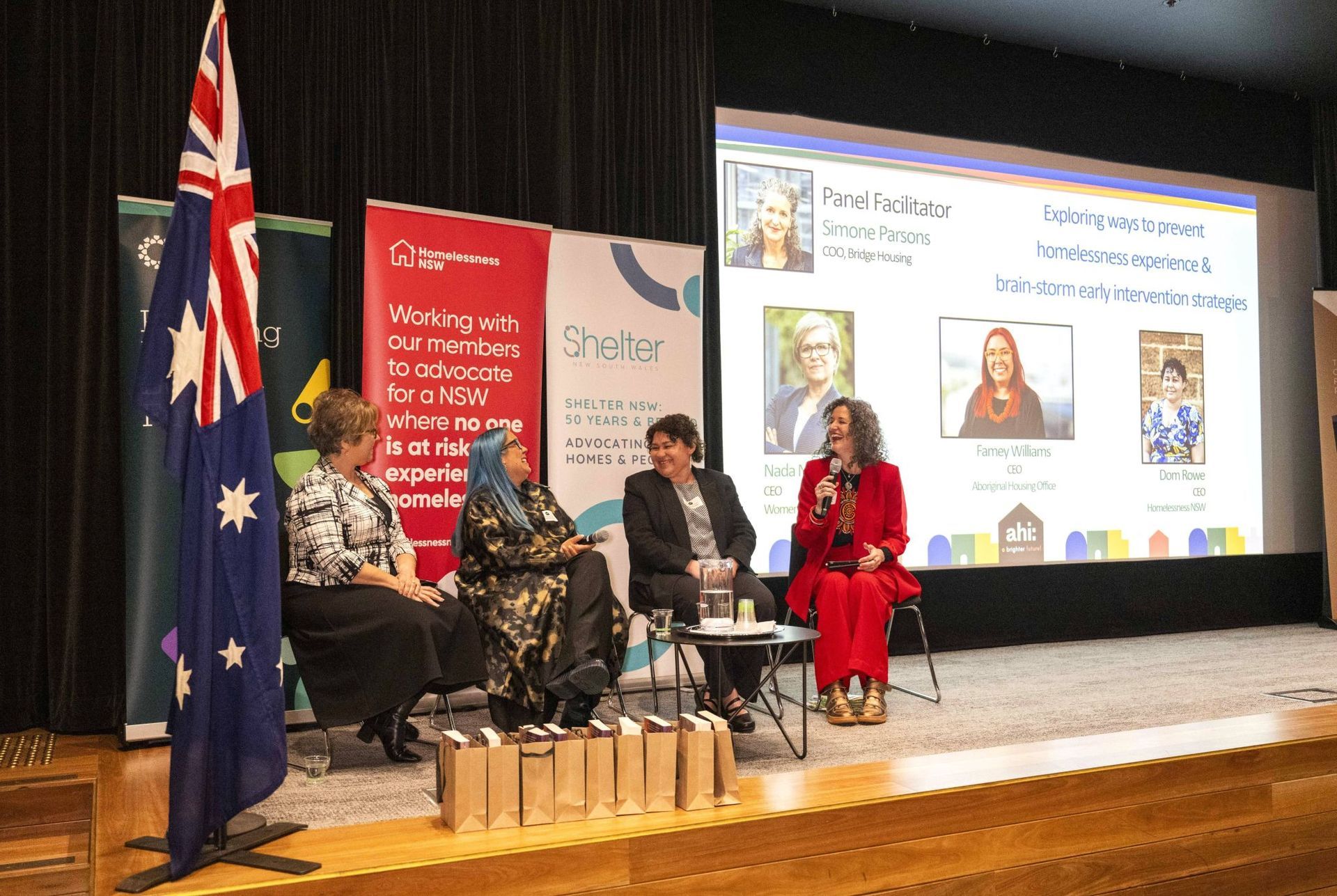Coast2Bay Housing Group’s RISE2 program was the winner of Leading Innovation at the ahi Queensland: Brighter Future Awards 2023. Here, we share the history of the program, key concepts that have shaped its success and feedback from some of the residents.
Sunshine Coast's Coast2Bay Housing Group is a not-for-profit community and affordable housing organisation with a mission to transform lives, promote social inclusion and contribute to economic development. As a Tier 1 Community Housing Provider with over 30 years’ experience, the team of Coast2Bay Housing has a deep knowledge of tenant needs and have utilised this to deliver the innovative RISE2 program.
"On average, one woman every nine days and one man every month is killed by a current or former partner."
RISE2 (Restart in a Safe Environment) is an innovative approach to the design and provision of emergency accommodation for women and children impacted by Domestic and Family Violence (DFV). DFV is the main reason women and children leave their homes in Australia (AHURI 2021) with 1 in 4 Australian women having experienced DFV from a current or previous partner (ABS 2017). On average, one woman every nine days and one man every month is killed by a current or former partner (AIHW 2019).
These statistics clearly indicate the urgent need to not only tackle the cause, but also provide options of hope and appropriate supports for the significant numbers of women and children who are currently experiencing DFV. A housing-first approach is critical to provide a platform for assisting families to cope with the displacement caused by DFV.
Where it all began
RISE2 was a concept and fundraising initiative created by local women, members of the Zonta Caloundra City Inc. Club in 2011. The intention was to provide more accommodation, professional support and a pathway to a new life for women and children impacted by DFV across the Sunshine Coast region.
In 2014, a gift of land from a local philanthropist ensured the vision of RISE2 became a reality. Coast2Bay Housing Group and The Salvation Army were engaged to help deliver the Zonta Club’s vision and, in 2017, after intensive local community fundraising to meet construction costs, the first two RISE dwellings were completed and opened.
An opportunity for funding
In 2022, the Commonwealth announcement of the Safe Places capital grants presented an opportunity for Coast2Bay Housing to scale up the program. To support growth, The RISE2 Foundation was established as a charitable entity. A voluntary foundation committee was appointed to oversee the charity, its fundraising and community involvement. The RISE2 model was developed to innovatively plan and construct built-for-purpose, emergency housing for families that are markedly different to the traditional shelter model.
After a successful application, Coast2Bay Housing was awarded $3.2 million in funding for the program. Coupled with continued fundraising from local Zonta Clubs and the wider community, it allowed for the delivery of eight more duplex homes on the Sunshine Coast.

The RISE2 model
A comprehensive model was created to ensure successful delivery of the homes and program. There are several key elements and aims that differentiate the RISE2 model from other DFV emergency accommodation:
- A careful design response and approach for secure, non-congregate dwellings that look and feel like an ordinary house in an ordinary street. This is an alternative to a communal shelter, which can often result in further trauma to families.
- Partnerships with key stakeholders – including developers for site selection, design, accessibility and built form – for application of best practice.
- An architect-led design response focussed on privacy, safety and accessibility.
- Accommodation provided for an average of six to 12 months. This allows the women and children to stabilise their circumstances, provides a place from which a longer-term housing solution can be found and takes them from immediate homelessness.
- Wraparound programs and services, such as counselling provided by the Salvation Army and other organisations, tailored to the individual support needs of families.
- Fully furnished homes, as many flee with little or no possessions.
- An income-based rent model, which allows the RISE2 program to be offered to a wider cohort, some of whom may not be eligible for funded DFV services.
The partners in RISE2 and the larger network of services that Coast2Bay Housing works alongside, provide a vital safety net for advice, relationship-building, education and information-sharing. This continues to ensure the RISE2 program is responsive, well managed and has access to current policy, best practice, knowledge and opportunities.
The program currently operates ten properties that, on average, will support 20 families and 50 children each year. To date, 13.2% of all Coast2Bay Housing tenancies provide safe, supported housing for women and children impacted by domestic and family violence.
How RISE2 changes lives
The Coast2Bay Housing team regularly gather feedback and testimonials from the families that have been supported through RISE2. The women and children have shared how much having a safe home has meant to them. They have detailed how the counselling and ongoing support services have equipped and enabled them to rebuild their lives, sense of self, and improve their physical and mental wellbeing.
An excellent example is provided by Jane, a mother of three children all aged under six years old. She heard about RISE2 through a friend, accepted support for a detailed risk assessment and gained access to RISE2 emergency accommodation to escape an abusive partner.
“It looked just like any home in an ordinary street... So, it helped me to feel a sense of normality and the chance for a fresh start with my family."
Jane left with nothing. She was especially grateful for the security and suburban style of the housing because “it looked just like any home in an ordinary street," she said, "so, it helped me to feel a sense of normality and the chance for a fresh start with my family."
Jane and her children completed a range of counselling programs provided by The Salvation Army over approximately six months, integrating with school support services. She was then assisted to relocate to community housing, and she and her children are continuing to receive counselling support as they create a new future together.
"My three-year-old girl was excited and just walked from room to room, saying, 'WOW!' That night was the first time in months I slept the whole night."
Another RISE2 tenant, Cassie, said. “When we first walked into the RISE2 house, I was shocked at how nice, clean and new it was – it instantly felt like home. My three-year-old girl was excited and just walked from room to room, saying, 'WOW!' That night was the first time in months I slept the whole night, exhausted but feeling huge relief. I feel like we can start over now.”
The RISE2 Foundation proactively seeks major funding, grants, donations and partnerships to deliver the commitments of the program. Over the next three years, Coast2Bay Housing is committed to increasing the program from 10 to 50 dwellings. This ambitious goal will only be achieved through continued partnership work with developers, state and federal governments, local councils, business sponsors and other community organisations.
The collaborative effort behind RISE2 will ensure families have the custom support and safe homes they need to restart their lives and reshape their own journeys for generations to come.
References
- Australian Housing and Urban Research Institute (2021) Housing, homelessness and domestic and family violence
- Australian Bureau of Statistics (ABS). 2017. Personal Safety Survey, Australia, 2016 (ABS cat. no. 4906.0). Canberra, ACT: ABS.
- Family, domestic and sexual violence in Australia: continuing the national story 2019. Canberra: AIHW
Share This Article
Other articles you may like








